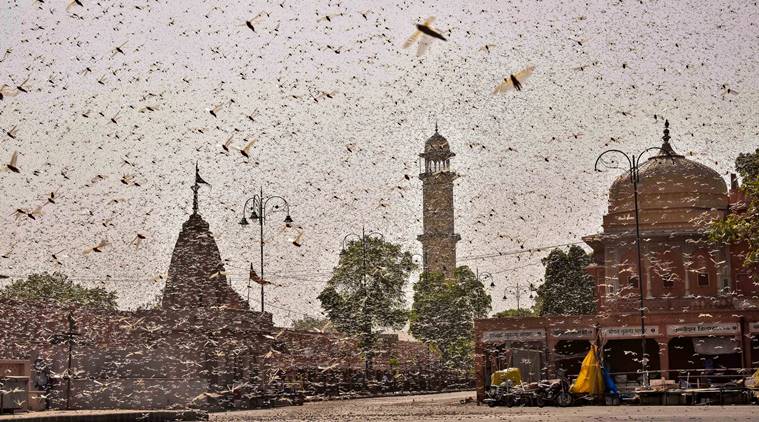
The Indian Express
DGCA says locust swarms pose threat to aircraft during landing and takeoff phase, issues guidelines
"Though an individual locust is small in size, impact of large numbers on the windshield is known to have impacted the pilot forward vision. This is a grave concern during the landing, taxi and takeoff phase," the DGCA circular said.
by Express Web DeskAs fast-spreading locust swarms enter urban areas of India, Aviation regulator DGCA Friday issued guidelines for stakeholders like pilots and engineers on how to deal with the issue as they pose a threat to aircraft in the critical landing and takeoff phase of a flight.
India is battling the worst desert locust outbreak in decades eating their way across vast swath of crops in Rajasthan, now invading Punjab, Gujarat, Maharashtra and Madhya Pradesh.
“Though an individual locust is small in size, impact of large numbers on the windshield is known to have impacted the pilot forward vision. This is a grave concern during the landing, taxi and takeoff phase,” the DGCA circular said.
Pitot and static sources can also get partially or fully blocked while flying through locust swarms, it stated. “Blocked pitot and static sources lead to erroneous instrument indications, especially unreliable air speed and altimeter indications,” it said. A pitot tube in airplanes is used to measure the flow speed of the wind.
Here are the guidelines issued by the DGCA:
* Use of wipers at times may cause the smear to spread even more, and therefore, the pilot should consider this aspect prior to opting to use wipers to remove locusts from the wind shield, it said.
* Large swarms can also obstruct visual ground contact over a large area, therefore flights under Visual Flight Rules (VFR) also need to be aware of their presence. Air traffic controllers, when aware of locust presence in the vicinity of their aerodrome, are advised to share the information with all arriving and departing flights.
* As it is a day-time phenomenon, the pilot is also expected to keep a keen eye for any such observations.
* All pilots are also required to share information of locust swarm location if they have sighted any during the flight.
* It is strongly advised that flights should be avoided through any known locust swarm. The only favourable aspect is that locust do not fly at night, thus providing better opportunity to sight and avoid them.
* After a flight goes through a locust swarm, appropriate entry in the pilots defect log should be made giving details of any malfunction experienced and the engineering crew should conduct checks as mandated prior to release of aircraft for the next flight.
* Ground-handling agencies should be aware that locust swarms pose risk to parked aircraft, where possible air inlets and probes should be covered.
* Generally, locusts are found at lower levels and therefore pose a threat to aircraft in the critical landing and takeoff phase of the flight. Almost all air intake ports of the aircraft will be prone to ingestion in large numbers, if the aircraft flies through a swarm (areas like engine inlet, air-conditioning pack inlet etc.).